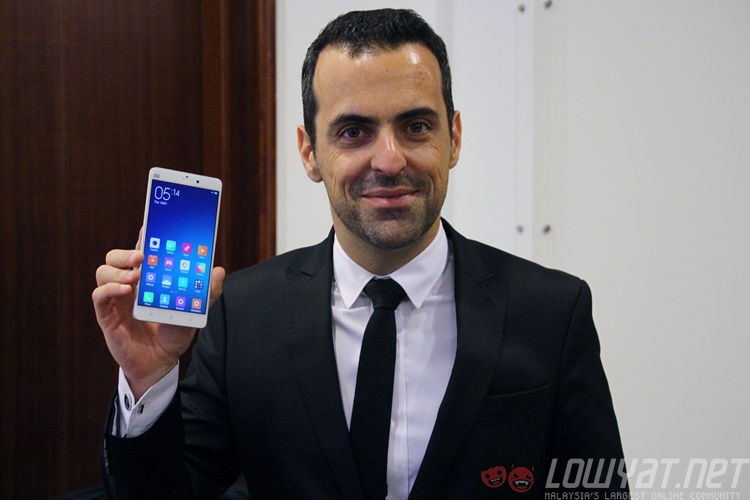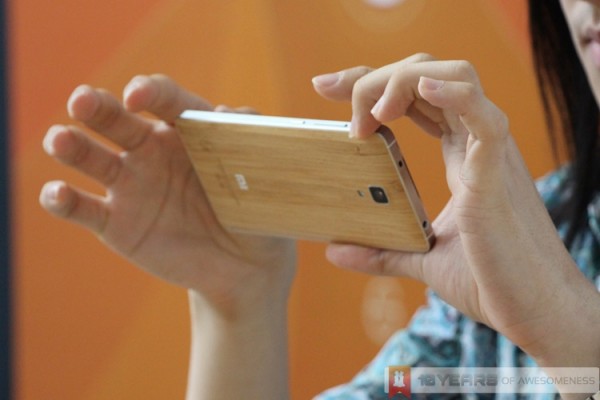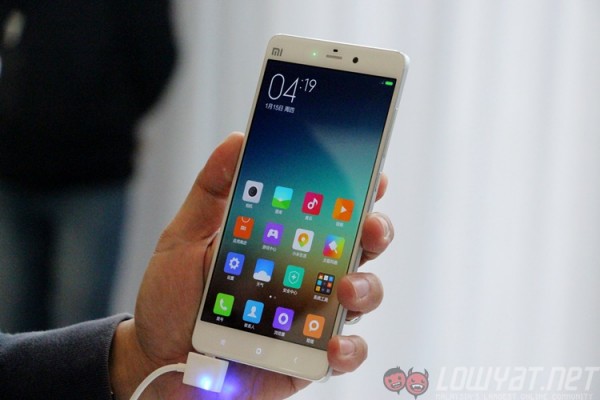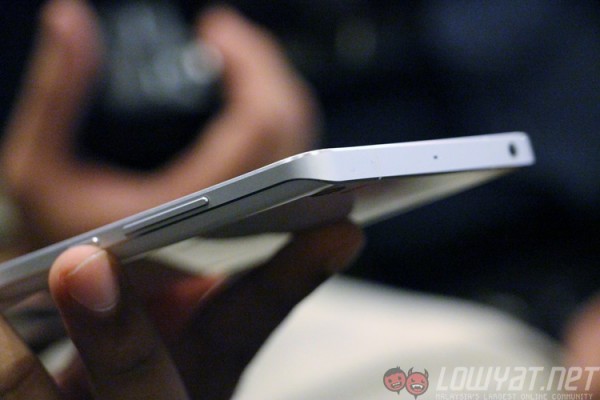Xiaomi’s Mi Note launch event last week was a particularly significant one for the company. Not only was this the first real global launch event by Xiaomi, the Mi Note was also the first Mi phone designed for the international market. Even Hugo Barra, the Xiaomi Global VP famed for his casual polo tee outfits, was decked in a suit; evidently, this was a big deal.
It was also a big deal for Malaysian Mi Fans, as after the event it was revealed that Xiaomi will not be releasing its current flagship, the Mi 4, into Malaysia. This was the latest in a series of let-downs from the Chinese company, and for some, it may have been the straw that broke the camel’s back. After arriving to such frenzy in Malaysia, has Xiaomi-mania hit its lowest ebb?

Let’s start with the elephant in the room. The Mi 4 was perhaps the Xiaomi smartphone most Malaysian users were looking forward to buying officially. What’s not to like? Snapdragon 801, 3GB RAM, Full HD IPS display, 13MP camera…and a retail price that promised to be almost half what other Android flagship smartphones were going for.
There was just one thing: the LTE bands the Mi 4 supported were designed for the Chinese market. Band 7 (2,600MHz), the most commonly-used LTE band in Malaysia, is not supported. As a result, Xiaomi was left with a very delicate situation: should they proceed with releasing the Mi 4, and face consumer-related issues later on…or not release it at all?
Eventually, Xiaomi decided on the latter. It proved to be a hugely unpopular decision to make, but it was one that served in its best interests. If Xiaomi had released the Mi 4 with limited 4G connectivity, some consumers would eventually question its limited LTE connectivity. Comparisons would also naturally arise between this “crippled” model and other Chinese smartphones such as the Huawei Honor 6 or the OnePlus One; comparisons that the Mi 4 would not actually fare well on. It may be worse for Xiaomi to release the 3G-only model: which smartphone company releases a 3G-only flagship, but its more affordable smartphones pack LTE? For Malaysia, where LTE penetration is one of the highest in the region, doing so would seriously hurt the company’s image as being in the forefront of the mobile industry.
The Mi 4’s “broken promise” is just another disappointment for Mi Fans in Malaysia. The biggest concern is with the flash sales, or more like the lack of it. Towards the end of 2014, what used to be weekly flash sales became more and more scarce, to the point where there were just four flash sales in September to November, ending with the Christmas with Mi sale.
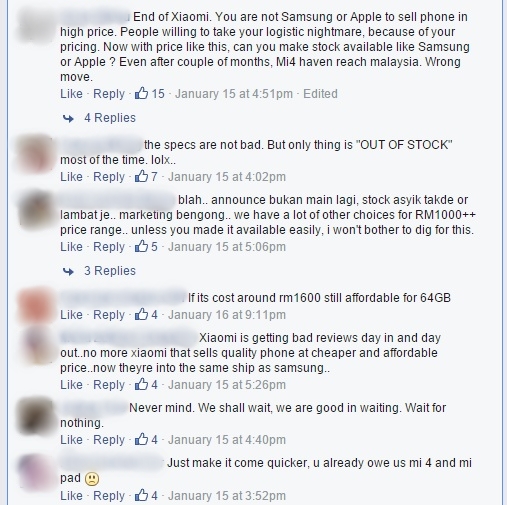 (Source: Mi Malaysia Facebook)
(Source: Mi Malaysia Facebook)
Compare that with our closest neighbours, Singapore, whose last flash sale was last week. Let’s not even go into India, where Xiaomi’s focus seems to fall these days. And who can blame the company? India is an untapped gold mine of new smartphone users, with an estimated 1 billion users purchasing their first smartphone; why else would mobile companies like Google, Microsoft, Jolla, OnePlus and Xiaomi throw most of its weight there?
At each of its flash sale, Xiaomi sells five figures’ worth of smartphones at a time. Demand is so much higher than supply, that one suspects that the company could be pushing stocks allocated for other markets to satisfy demand in India.
All this just frustrates Malaysian Mi Fans even more, especially when they are already unhappy at what they perceive to be Xiaomi’s style of “artificially creating a shortage of stocks”. People want to buy Xiaomi products, but what happens when they simply cannot?

 (Source: Mi Malaysia Facebook)
(Source: Mi Malaysia Facebook)
As a result, the Mi Note is turning out to be a very important product for the Malaysian market. After all, this was the Mi phone that’s designed from the ground up as an international smartphone. But this is also the first Xiaomi smartphone whose base model surpasses the 2,000 Yuan/ US$500 mark (edit: the base model of the Mi Note retails for US$370, not over US$500), effectively marking a huge shift in the company’s direction. Even if this appears to be warranted – the Mi Note, according to CEO Lei Jun, sells “almost at cost” – the consumer mindset is still stuck on the RM789 Mi 3, and the promise of a Mi 4 that will only cost around RM1,200.
Even if the Mi Note is likely to cost at least RM1,000 lower than its benchmarks, the Apple iPhone 6 Plus and Samsung Galaxy Note 4, some are already labelling it as “expensive for a Xiaomi device” – a phenomenon that’s probably risen for the first time ever in Xiaomi’s history.
As it stands, companies like Honor and Asus are already breathing down Xiaomi’s neck – using Xiaomi’s own marketing tactics – and slowly creating its own fanbase with products such as the Honor 6 and ZenFone series. Xiaomi’s next step in Malaysia will be crucial – but surprisingly simple. It does not need to work on another charm offensive to regain its fans. It just needs to start selling its products here again (and regularly).
Oh, and maybe hold true to its Q2 promise of the Mi Note’s release in Malaysia.
Follow us on Instagram, Facebook, Twitter or Telegram for more updates and breaking news.


